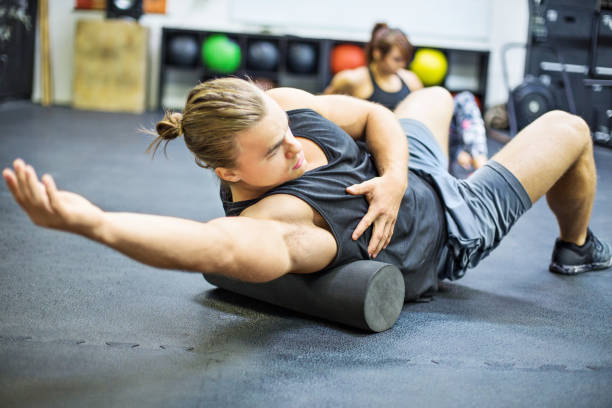Foam rolling
Foam rolling has been used by professional and amateur athletes for several years. When foam rollers are used the intention from the athlete is to reduce tension in the muscles which creates a greater range of movement (ROM). However, there has never been research into the effect of foam rolling and static stretching (Andrew R Mohr, 2013). Foam rolling is a normal practice for athletes and people who use the gym regularly are often advised by their gym instructors to foam roll in addition to exercise as Pearcey (2015) in their research has found evidence of how foam rolling reduces delayed-onset muscle soreness (DOMS). According to their research this is as it can release trigger points in muscles and stimulate oxygenated blood flow to the area to stimulate muscular repair. Just as research can say that foam rolling can reduce the effect of DOMS there is also lots of research that looks to show how foam rolling has no benefit to people who are looking to increase the speed at which they recover this can be shown by the research of Brengesjo and Lohaller (2017). For their study Brengesjo and Lohaller found participants who trained and assessed their ROM in ankles and the hamstring group. After this the participants were asked to ‘roll out’ their lower leg with a foam roller. ROM in the ankle and hamstring muscle group were then reassessed. Although that through their study they found results that suggest that foam rolling has no efect on the decrease if DOMS or an increase in ROM. Their research is supported by the work of Healey (2014) who also found that foam rolling made no apparent difference in ROM or the decrease in DOMS. Brengesjo and Lohaller make a good point of stating how more research is needed as there is no ‘standardised’ way to foam roll that they used or were able to find in order to be able to use in their research. This can then lead the question that if more research is conducted into a more ‘standardised’ way or some ‘standardised’ techniques for example a way of foam rolling in order to increase ROM and then another way that is more orientated to ‘decreasing DOMS’ these procedures could then have research conducted into how well they effect a condition such as ROM instead of the tool itself.
Although there is research that suggests that foam rolling does not have any benefits for the people who use them, foam rolling has a large following who doesn’t seen to be put off by the lack of support for the people who use them so frequently.
References
Andrew R Mohr, B. C. (2013). Effect of Foam Rolling and Static Stretching on Passive Hip-Flexion Range of Motion. Human Kinetic journal , 1.
Brengesjö, O. &. (2017). Effects of foam rolling on ankle joint ROM and hamstring flexibility.
Pearcey. G. E., B.-S. D. (2015). Foam rolling for delayed-onset muscle soreness and recovery of dynamic performance measures. Journal of althletic training, 5-13.
